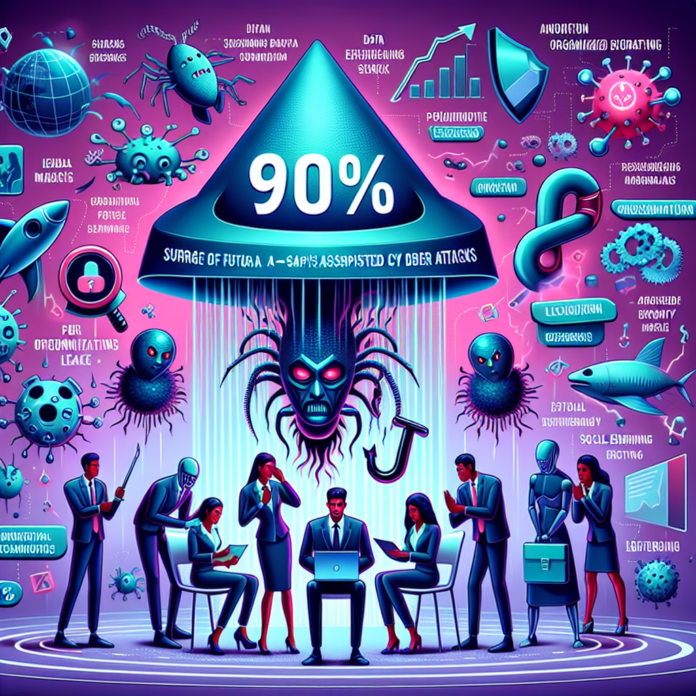As Criminals Innovate With AI, Cyber Defenses Scramble to Keep Up
The rapid advances in artificial intelligence (AI) are reshaping the battlefield between cybercriminals and security teams, raising the stakes for corporations and government agencies already struggling to keep threats at bay. As digital crime syndicates increasingly exploit generative AI tools, the landscape of cybercrime is evolving at an alarming pace, prompting a desperate scramble among security professionals to bolster defenses.
The Rise of AI-Driven Cybercrime
Recent research from cybersecurity firm Check Point Software Technologies highlights a troubling trend: cybercriminals are leveraging generative AI to streamline and scale their operations. This includes everything from sophisticated phishing campaigns to the development of advanced malware. The result is a surge in both the sophistication and volume of cyberattacks, as bad actors automate key components of their operations.
Sergey Shykevich, a threat intelligence group manager at Check Point, notes that “the barrier to entry for cybercrime has never been lower.” Even novice attackers can now utilize AI tools to craft convincing phishing emails and malware that would have required significant programming expertise just a year ago. This democratization of cybercrime tools poses a significant threat to organizations of all sizes.
The Mechanics of AI in Cybercrime
Generative AI, particularly large language models, has enabled a dramatic increase in the creation of deepfake images, doctored audio, and realistic-sounding messages. These tools are designed to deceive victims into clicking malicious links or divulging sensitive credentials. By employing AI, attackers can quickly tailor their lures to reflect a target organization’s unique vocabulary, internal references, or digital branding, making their schemes even more convincing.
Check Point cites alarming examples, including AI-powered phishing attempts that mimic the voices of C-suite executives to persuade employees to authorize fraudulent wire transfers. In one notable case, attackers used publicly available data and AI to impersonate a CEO during a video call, resulting in significant financial losses for the company.
Security Professionals Under Pressure
As cyber threats escalate, security professionals find themselves under immense pressure to combat these sophisticated attacks. This challenge is compounded by tight budgets and a persistent shortage of skilled cybersecurity workers. Experts warn that this gap could widen if AI continues to favor criminals over defenders.
Patrick Tiquet, vice president of security and architecture at Keeper Security, emphasizes that the challenge is not merely that generative AI makes attacks more creative or convincing; it’s that it does so at a scale and speed that can overwhelm even well-resourced teams. The arms race between cybercriminals and security professionals is intensifying, with both sides rapidly adopting AI technologies.
The Double-Edged Sword of AI
While AI poses significant challenges for cybersecurity, it also offers opportunities for defense. Security vendors are integrating AI into detection engines, threat intelligence systems, and network monitoring tools to identify suspicious activity in real time and sift through vast amounts of code for vulnerabilities. However, Tiquet cautions that the implementation of AI in security is not always straightforward.
“AI is only as good as the data it’s trained on and the humans guiding it,” he explains. Security teams must continuously refine their models and guard against false positives or AI-generated blind spots. The escalating arms race necessitates constant vigilance and adaptation.
Data Privacy Risks Multiply
As businesses rush to adopt new generative AI solutions, experts warn of a parallel crisis: the risk of accidental data leaks and privacy violations. Employees may inadvertently expose proprietary information by feeding it into chatbots, code generators, or image creators that lack adequate security measures.
Check Point has reported a surge in “shadow AI” usage—applications accessed by employees without oversight from security teams. This can lead to sensitive records or intellectual property being exposed to external servers or malicious actors. Shykevich warns that many organizations underestimate how easily confidential data can be leaked through unsanctioned AI platforms.
The Regulatory Landscape
The growing concern over AI-driven cybercrime has caught the attention of regulators in Washington and Brussels. Policymakers are considering new rules that would impose stricter oversight on AI providers and their business clients. The Biden administration and the European Union have expressed interest in mandating transparency, security assessments, and incident reporting for AI-enabled services.
While regulation can play a role in mitigating risks, security executives argue that organizations should not wait for government action. Tiquet advises companies to assess their AI exposure immediately and implement clear usage policies for employees.
Conclusion: Adapting to the New Reality
As the landscape of cybercrime continues to evolve, it is clear that AI is here to stay on both sides of this arms race. The question now is which side will adapt the fastest. Organizations must remain vigilant, investing in both technology and training to stay one step ahead of increasingly sophisticated threats. The stakes are high, and the need for robust cybersecurity measures has never been more urgent.


